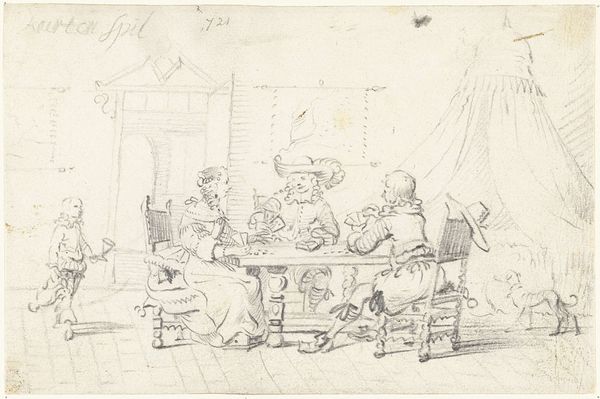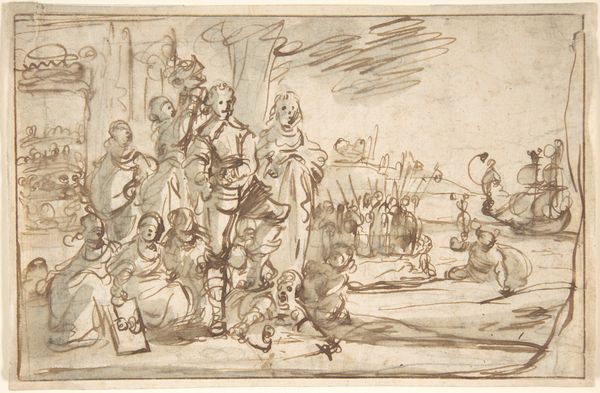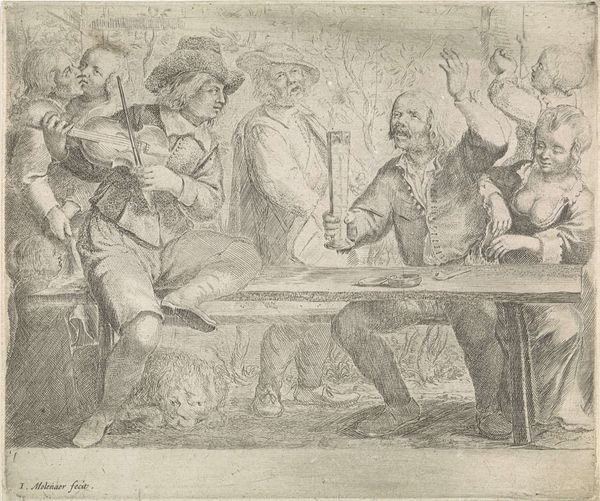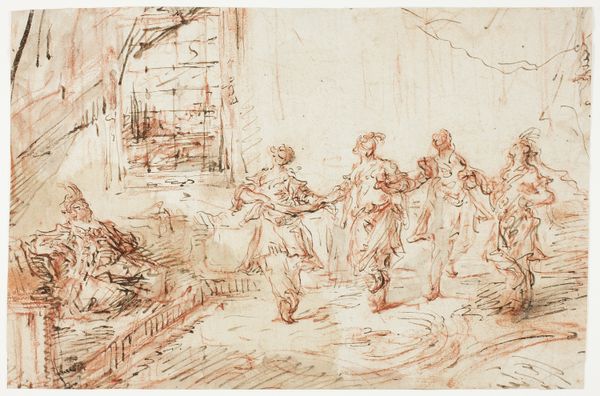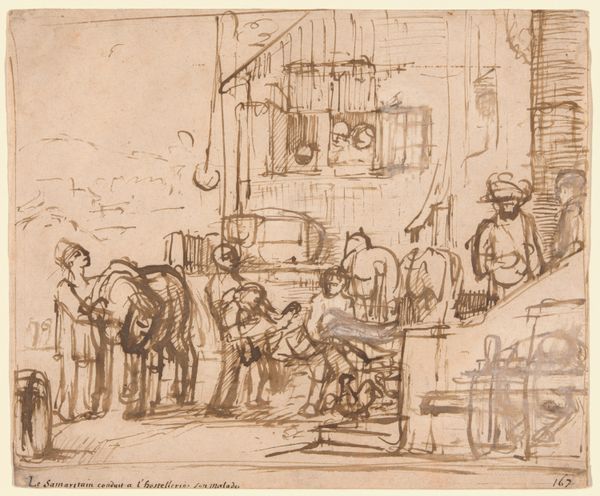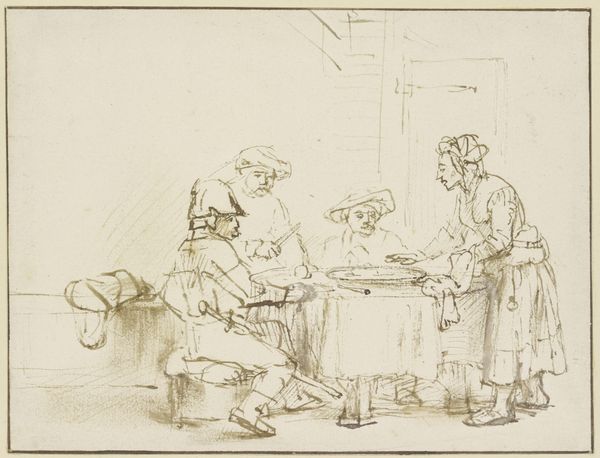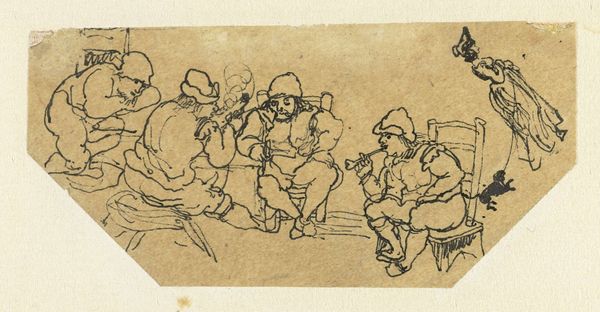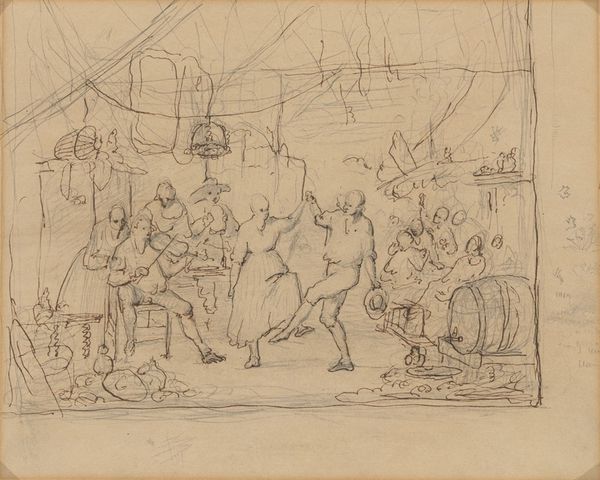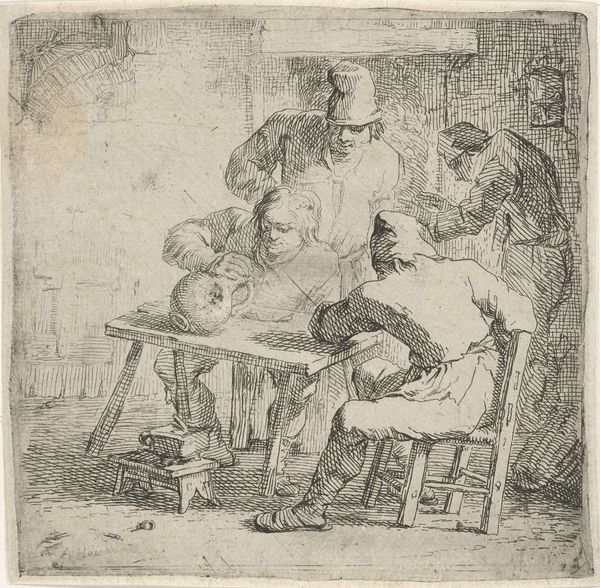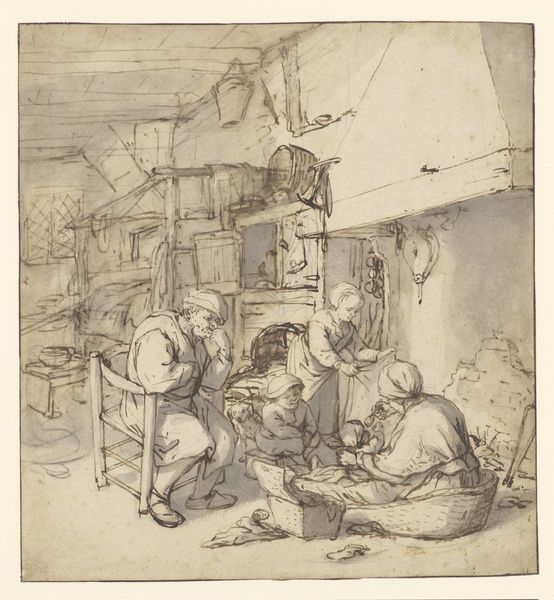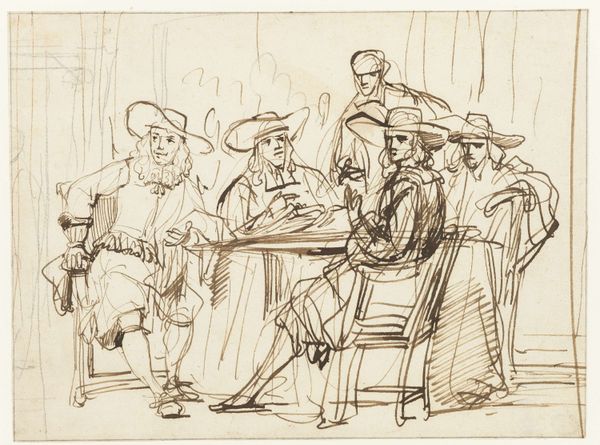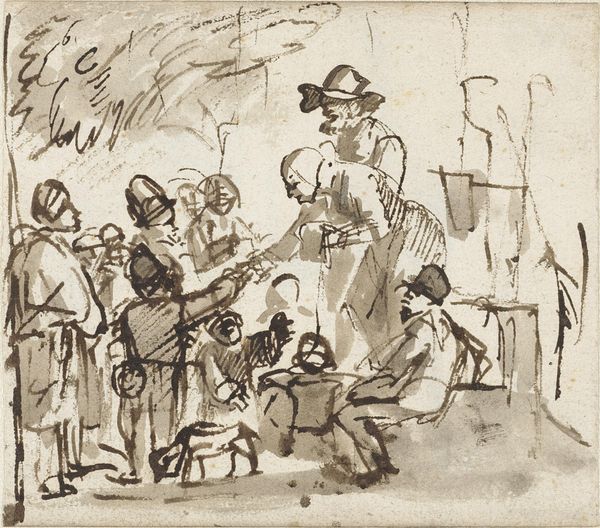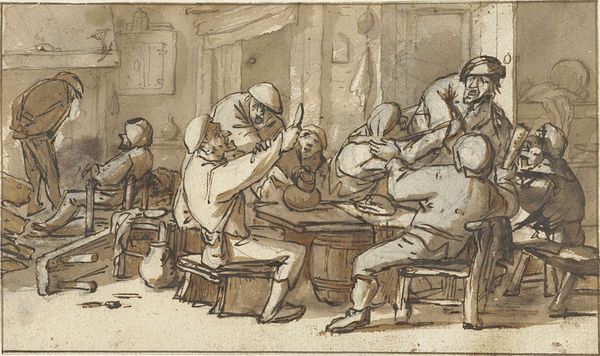
Interieur van een boerenherberg met vijf rokende en drinkende boeren 1640 - 1685
0:00
0:00
drawing, ink, pen
#
drawing
#
narrative-art
#
dutch-golden-age
#
figuration
#
ink
#
pen
#
genre-painting
Dimensions: height 158 mm, width 289 mm
Copyright: Rijks Museum: Open Domain
Curator: Adriaen van Ostade's "Interior of a Tavern with Five Peasants Drinking and Smoking," created sometime between 1640 and 1685, greets us. It's currently housed here at the Rijksmuseum, rendered with pen and ink. What's your immediate impression? Editor: I see a den of leisure, a space seemingly untouched by the concerns of the outside world. It seems small, almost claustrophobic, the strokes dense, capturing the fug of smoke and the weight of the peasants’ exhaustion. Curator: It's fascinating to consider how Ostade depicts labor here. These peasants, ostensibly at rest, are still defined by their social and economic standing. The very fact that we're viewing their leisure is mediated by their lack of power. Do you think there's commentary about their marginalization implied here? Editor: I see a depiction of everyday life in carefully chosen materials. The stark pen and ink emphasize the grittiness of the scene, the raw materials of their existence. Look at how the artist utilizes simple, economic lines to evoke so much texture—the coarse fabric of their clothes, the rough-hewn furniture, all signs of material hardship. Curator: Yes, and in examining the spatial arrangement, we can almost see this interior as a stage for a specific kind of social performance. Consider the figures clustered together—it emphasizes their mutual dependence and the closed-off nature of their world. Does their enjoyment serve as an intentional challenge or mere background in this world? Editor: Their community becomes clear through the production and consumption that are occurring in real-time. The pipes being smoked and the beverages consumed provide a brief departure. The way van Ostade records all of this suggests that every material has a place in the space and time represented. Curator: This truly adds so much to consider regarding labor, the context of its display, and those enjoying time after production in 17th century life. It gives a sense of time and a clear focus. Editor: Indeed! Thank you, it’s been an experience observing the drawing from multiple angles. The layers of craftsmanship and representation are what continue to interest me.
Comments
No comments
Be the first to comment and join the conversation on the ultimate creative platform.
